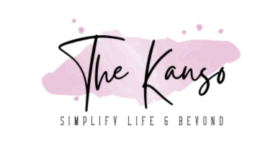When we think about financial disparity, images of food insecurity or inadequate housing often come to mind. But the burden of poverty extends far beyond basic necessities. Low-income families face a hidden tax: a disproportionate cost for essential services that most take for granted.
This article delves into the services that poor people spend on, which the middle class and the rich rarely consider.
Temporary Housing Solutions

One of the most fundamental needs, housing, presents one of the greatest financial challenges for low-income families. For these households, a large portion of their monthly budget is consumed by rent and utilities. Unlike their wealthier counterparts who might allocate a smaller proportion of their income to such expenses, poorer families often face what is known as a “housing cost burden.”
This term refers to households spending more than 30% of their income on housing alone, a scenario far too common among the economically disadvantaged. The high cost of rent coupled with the ever-increasing prices of electricity, heating, and water can quickly drain limited resources, leaving little for other necessities, let alone savings.
Ride Shares and Taxis

Transportation is another critical area where economic class influences spending habits. For many low-income families, owning a car is an unaffordable luxury. Instead, they rely on public transportation, which can be both a blessing and a curse. While public transit offers a more affordable alternative to owning and maintaining a vehicle, it often limits employment opportunities to areas within the transit network.
The poor spend more on public transportation and face more restrictions in job accessibility, contrasting sharply with the transportation flexibility enjoyed by higher-income families.
Pawn Shops and Thrift Stores

Pawn shops and thrift stores play a crucial role in the lives of those with limited financial means. These venues not only serve as a place to purchase affordable goods but also act as financial lifelines where individuals can pawn items for quick cash.
While these stores provide necessary services, they also often result in less favorable financial terms for the poor, who receive minimal compensation for pawned goods or spend on lower-quality, second-hand items that might need sooner replacement.
Debt Services and Financial Management

High interest rates on credit cards and cash advances are a significant burden for low-income earners. Without access to traditional low-interest credit options, many resort to high-cost payday loans or cash advances that come with exorbitant fees. This cycle of debt leads to financial instability, setting apart the spending habits of the poor from those of wealthier individuals who can leverage better financial products.
Informal Lending Circles

In communities where access to traditional credit is limited, low-income individuals often participate in informal lending circles or “tandas.” These are small, personal credit systems where community members contribute to and withdraw from a collective fund. While these can provide a lifeline without the need for formal credit approval, they also carry risks of instability and lack the formal protections that traditional banking institutions offer.
Fast Fashion and Low-Quality Goods

Economically disadvantaged individuals are often compelled to purchase fast fashion or low-quality public goods due to their lower upfront costs. However, the need to replace them frequently due to poor durability leads to higher expenses over time. This cycle of consumption contrasts with the buying habits of more affluent groups, who can invest in high-quality items that last longer and offer better long-term value.
Extended Warranties and Unnecessary Insurance

Extended warranties and additional insurance products are often marketed aggressively to low-income consumers, who fear the financial impact of product failures or accidents. Unfortunately, these products seldom provide reasonable value, carrying high costs and offering limited coverage. This contrasts with wealthier consumers who might opt out of such add-ons, understanding them as unnecessary expenses.
Impulse Buys and Retail Therapy

Impulse buying and retail therapy are prevalent among all economic classes, but the consequences are more severe for those with limited budgets. Low-income individuals often face greater emotional and psychological stress due to financial pressures, making them susceptible to impulse purchases as a temporary relief.
This behavior is particularly detrimental as it diverts funds from essential needs, a luxury that their wealthier counterparts might afford without significant repercussions.
Pay-Per-Use Services

Pay-per-use services, such as rental furniture or appliances, are often the only viable options for low-income individuals who cannot afford the high upfront costs of purchasing these items outright. While these services provide an immediate solution to furnishing a home or accessing necessary appliances, they can be more costly in the long run.
Over time, the cumulative rental fees can significantly exceed the value of the items themselves. This creates a financial paradox where the need for immediate affordability locks individuals into paying more, highlighting a financial trap that wealthier individuals typically avoid by investing in durable goods that offer long-term savings.
Convenience and Processed Foods

For lower-income individuals who often juggle multiple jobs, time is a scarce commodity. This scarcity makes quick, ready-to-eat meals not just a convenience but a necessity. As a result, many low-income families turn to frozen or processed foods that require minimal preparation time.
While these products save time, they tend to be less nutritious and more costly per nutritional unit than meals prepared from whole ingredients. The reliance on such foods underscores the socio-economic divide in food quality and access, reflecting a broader issue of food inequality where the demands of work and the limitations of income force poorer families into less healthy eating habits.
Frequent Relocations

Low-income individuals and families often face frequent relocations due to unstable housing situations such as rising rents, eviction, or the search for more affordable living conditions. These moves are not only physically and emotionally taxing but also come with significant financial costs. Expenses like security deposits, moving supplies, utility setup fees, and lost work hours can quickly accumulate, making stability even harder to achieve. This transient lifestyle contrasts with higher-income households that generally enjoy more stable and long-term housing situations.
High-Cost Utility Services

In economically disadvantaged areas, residents often face higher rates for basic utilities such as electricity and water. These areas might not benefit from competitive pricing or efficient infrastructure, forcing residents to pay premium prices for essential services. Additionally, homes in lower-income neighborhoods are frequently older and less energy-efficient, leading to higher energy bills. This disparity in utility costs means that low-income individuals spend a larger portion of their income on keeping their lights on and water running compared to wealthier households, who can afford to live in areas with better rates and invest in energy-efficient upgrades.
Lottery and Gambling

Low-income individuals are often disproportionately drawn to the lottery and gambling as a means of financial escape. The allure of turning a small amount of money into a life-changing sum can be irresistible for those struggling with daily financial burdens. This demographic often spends a higher proportion of their income on gambling compared to wealthier groups, seeing it as a potential, though statistically unlikely, opportunity to solve their financial problems quickly. Unfortunately, this can lead to a cycle where essential funds are diverted from more certain needs like food and housing to speculative gambles.
Cigarettes, Tobacco, and Alcohol

The consumption of cigarettes, tobacco, and alcohol can be particularly prevalent in low-income communities. These products are often used as a coping mechanism for dealing with the stress and challenges of financial insecurity. Despite the high cost of tobacco and alcohol products, they represent a significant portion of discretionary spending among the poor. This behavior not only drains limited financial resources but also contributes to long-term health problems, which can further exacerbate their economic hardships due to increased medical costs and reduced work capacity.


